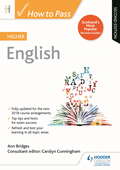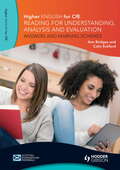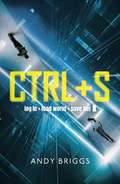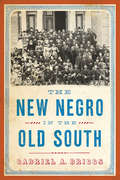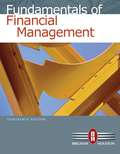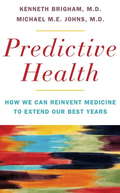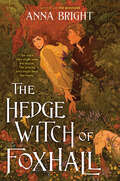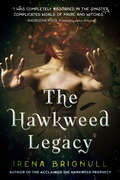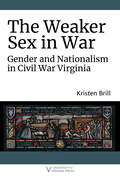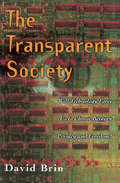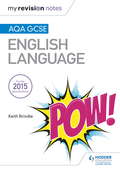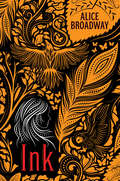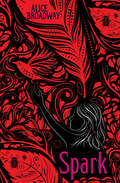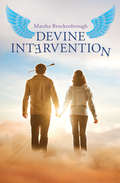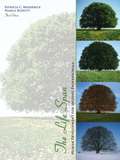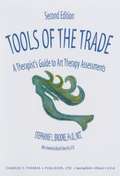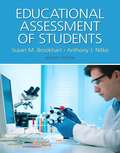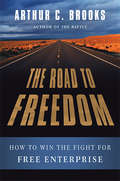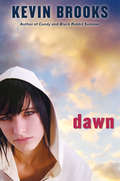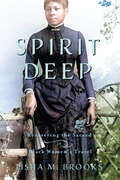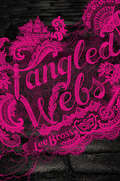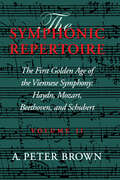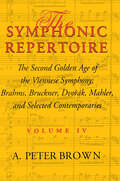- Table View
- List View
How to Pass Higher English: Second Edition Epub
by Ann BridgesExam Board: SQA Level: Higher Subject: English First Teaching: August 2018 First Exam: May 2019Get your best grade with comprehensive course notes and advice from Scotland's top experts, fully updated for the latest changes to SQA Higher assessment. How to Pass Higher English Second Edition contains all the advice and support you need to revise successfully for your Higher exam. It combines an overview of the course syllabus with advice from a top expert on how to improve exam performance, so you have the best chance of success.- Revise confidently with up-to-date guidance tailored to the latest SQA assessment changes - Refresh your knowledge with comprehensive, tailored subject notes- Prepare for the exam with top tips and hints on revision techniques- Get your best grade with advice on how to gain those vital extra marks
Higher English for CfE: Reading for Understanding, Analysis and Evaluation - Answers and Marking Schemes
by Ann Bridges Colin EckfordThis book (which is photocopiable within the purchasing institution) provides detailed suggested marking instructions to use alongside the student book of the same name, which offers practice in the Higher element of Reading for Understanding, Analysis and Evaluation - worth 30% of marks in the final exam. Written by two highly experienced authors, the student book introduces the terms and concepts that lie behind success and offers guidance on the interpretation of questions and targeting answers. - Acquire and improve the skills needed for success in this area of CfE Higher - Detailed marking instructions to reflect the style of assessments in this section of the paper - Revise for the exam using the practice papers in the accompanying student book
Higher English for CfE: Reading for Understanding, Analysis and Evaluation
by Ann Bridges Colin EckfordA brand new edition of the former Higher English Close Reading, completely rewritten for the new Higher element - worth 30% of marks in the final exam. Written by two highly experienced authors, this book shows you how to practise for the Reading for Understanding, Analysis and Evaluation section of the CfE Higher English exam. It introduces the terms and concepts that lie behind success and offers guidance on the interpretation of questions and targeting answers.- Acquire and improve the skills needed for success in this area of CfE Higher- Includes questions and passages to reflect the style of assessments in this section of the paper- Revise for the exam using the practice papers and accompanying book of suggested answers
CTRL S: A brilliantly gripping near-future adventure for fans of Ready Player One
by Andy BriggsLOG IN > LOAD WORLD > SAVE HER.Life in the near future's NOT ALL BAD. We've reversed global warming, and fixed the collapsing bee population. We even created SPACE, a virtual-sensory universe where average guys like Theo Wilson can do almost anything they desire.But ALMOST ANYTHING isn't enough for some. Every day, normal people are being taken, their emotions harvested - and lives traded - to create death-defying thrills for the rich and twisted.NOW THEO'S MOTHER HAS DISAPPEARED. And as he follows her breadcrumb trail of clues, he'll come up against the most dangerous SPACE has to offer: vPolice, AI Bots and anarchists - as well as a criminal empire that will KILL TO STOP HIM finding her . . .
The New Negro in the Old South
by Gabriel A. BriggsStandard narratives of early twentieth-century African American history credit the Great Migration of southern blacks to northern metropolises for the emergence of the New Negro, an educated, upwardly mobile sophisticate very different from his forebears. Yet this conventional history overlooks the cultural accomplishments of an earlier generation, in the black communities that flourished within southern cities immediately after Reconstruction. In this groundbreaking historical study, Gabriel A. Briggs makes the compelling case that the New Negro first emerged long before the Great Migration to the North. The New Negro in the Old South reconstructs the vibrant black community that developed in Nashville after the Civil War, demonstrating how it played a pivotal role in shaping the economic, intellectual, social, and political lives of African Americans in subsequent decades. Drawing from extensive archival research, Briggs investigates what made Nashville so unique and reveals how it served as a formative environment for major black intellectuals like Sutton Griggs and W.E.B. Du Bois. The New Negro in the Old South makes the past come alive as it vividly recounts little-remembered episodes in black history, from the migration of Colored Infantry veterans in the late 1860s to the Fisk University protests of 1925. Along the way, it gives readers a new appreciation for the sophistication, determination, and bravery of African Americans in the decades between the Civil War and the Harlem Renaissance.
Fundamentals of Financial Management (Thirteenth Edition)
by Eugene F. Brigham Joel F. HoustonWith the same contemporary approach and dynamic examples that made previous editions so popular, this fully revised thirteenth edition of FUNDAMENTALS OF FINANCIAL MANAGEMENT continues to provide students with a focused understanding of today's corporate finance and financial management.
Predictive Health: How We Can Reinvent Medicine to Extend Our Best Years
by Kenneth Brigham Michael M. E. JohnsItOCOs no stretch to claim that America is in the midst of a healthcare meltdown. Care is costly and unattainable for many, and often unsatisfactory even for those who can afford treatment. The medical system focuses on treating diseases and their symptoms, and spends so much effortOCoand moneyOCoin the last miserable month of patientsOCO lives that little is left to make sure that the preceding years are as healthful as possible. In "Predictive Health," distinguished doctors Kenneth Brigham and Michael M. E. Johns propose to radically change the current model by restructuring the way patients receive care. They introduce the concept of predictive health, which will turn the existing paradigm on its headOCofocusing on prediction instead of diagnosis, and health rather than disease. Rather than treating symptoms as they arise, doctors practicing predictive health would be involved in a patientOCOs life right from the start. A drop of blood from a tiny heel prick at birth would be run through nanolabs, the resulting information assembled into a picture of the newbornOCOs health. Any potential risk factorsOCorisk for type II diabetes, genetic propensity for obesityOCowould be caught long before they became problematic, and strategies forged for treatment. In essence, health care professionals would become committed consultants, sticking with a patient for the entire course of their lives. The potential savings from this kind of partnership is staggering: the cost of lifelong health care would amount to less than the cost of a month-long stay in an early twenty-first century ICU. Interweaving descriptions of phenomenal advances in science and technology with illustrative anecdotes and personal experiences of the authorsOCO combined century in academic medicine, "Predictive Health" translates the foundations of the new biomedicine into language accessible to a general audienceOCothose who must understand the potential of the unprecedented opportunity confronting us if major change is to happen. The product of a decade-long collaboration between two of the leading figures in predictive health, "Predictive Health" offers a deeply knowledgeable, deeply humane look at the state of medicine today, and the potential for medicine tomorrow.
The Hedgewitch of Foxhall
by Anna BrightIn this gorgeous stand-alone fantasy romance perfect for fans of Margaret Rogerson and Allison Saft, a rebellious witch undertakes a last-ditch quest to restore magic to medieval Wales—as two princes vie for her heart.Magic is fading from Wales—choked off by King Offa’s Dyke, the enemy earthworks that spans the entire border. Even the dragons have disappeared. And now an attack is imminent.Prince Taliesin would love to watch magic die. Prince Dafydd fears it, and the throne. But when their father promises the crown to whichever son can destroy the dyke and restore magic to Wales, the brothers are forced into an uneasy rivalry.Ffion works hedgewitch magic for poor folk, not princes. Unlike the power-hungry Foxhall coven, she uses only what nature can spare. But when the coven’s greed costs Ffion everything, she will need power beyond her wildest dreams to get back what she’s lost.So when Prince Taliesin arrives, begrudgingly seeking a witch’s aid, Ffion agrees to help him—even if it means walking from one end of Wales to the other with the most use-less peacock she’s ever clapped eyes on. Even if it means striking a bargain with Dafydd behind Tal’s back. The fate of Wales depends on their quest . . . and so might the fate of Ffion’s heart.
The Hawkweed Legacy (The Hawkweed Series #2)
by Irena BrignullFrom screenwriter Irena Brignull, the stunning sequel to her critically acclaimed YA debut, The Hawkweed Prophecy ("Full of romance, heart and suspense...completely absorb[ing]." -Madeleine Roux) about a young witch forced to choose between love and magic.Poppy is discovering a purpose for her powers in Africa, but she is haunted by a vision of her own death. Taken in by a boy and his great-grandmother, a healer, they vow to keep her safe-even if that ultimately means holding her captive. But Poppy never stops longing for Leo and, when she feels his magic begin to spark, she will do anything to be reunited with him.Desperate to regain Poppy's trust and bring her home, Charlock embarks on a plan to reunite Leo with his mother. What Charlock doesn't foresee are the string of consequences that she sets into motion that leave Ember all alone and prey to manipulation, the clan open to attack from other witches, Sorrel vulnerable to Raven's ghost, Betony determined to protect her son from his father's fate, and which leave both Leo and Poppy in terrible danger.
The Weaker Sex in War: Gender and Nationalism in Civil War Virginia (A Nation Divided)
by Kristen BrillWith The Weaker Sex in War, Kristen Brill shows how white women’s wartime experiences shaped Confederate political culture—and the ways in which Confederate political culture shaped their wartime experiences. These white women had become passionate supporters of independence to advance the cause of Southern nationalism and were used by Confederate leadership to advance the cause. These women, drawn from the middle and planter class, played an active, deliberate role in the effort. They became knowing and keen participants in shaping and circulating a gendered nationalist narrative, as both actors for and symbols of the Confederate cause. Through their performance of patriotic devotion, these women helped make gender central to the formation of Confederate national identity, to an extent previously unreckoned with by scholars of the Civil War era.In this important and original work, Brill weaves together individual women’s voices in the private sphere, collective organizations in civic society, and political ideology and policy in the political arena. A signal contribution to an increasingly rich vein of historiography, The Weaker Sex in War provides a definitive take on white women and political culture in the Confederacy.
The Transparent Society: Will Technology Force Us To Choose Between Privacy And Freedom?
by David BrinIn New York and Baltimore, police cameras scan public areas twenty-four hours a day. Huge commercial databases track you finances and sell that information to anyone willing to pay. Host sites on the World Wide Web record every page you view, and "smart" toll roads know where you drive. Every day, new technology nibbles at our privacy.Does that make you nervous? David Brin is worried, but not just about privacy. He fears that society will overreact to these technologies by restricting the flow of information, frantically enforcing a reign of secrecy. Such measures, he warns, won't really preserve our privacy. Governments, the wealthy, criminals, and the techno-elite will still find ways to watch us. But we'll have fewer ways to watch them. We'll lose the key to a free society: accountability.The Transparent Society is a call for "reciprocal transparency." If police cameras watch us, shouldn't we be able to watch police stations? If credit bureaus sell our data, shouldn't we know who buys it? Rather than cling to an illusion of anonymity-a historical anomaly, given our origins in close-knit villages-we should focus on guarding the most important forms of privacy and preserving mutual accountability. The biggest threat to our freedom, Brin warns, is that surveillance technology will be used by too few people, now by too many.A society of glass houses may seem too fragile. Fearing technology-aided crime, governments seek to restrict online anonymity; fearing technology-aided tyranny, citizens call for encrypting all data. Brins shows how, contrary to both approaches, windows offer us much better protection than walls; after all, the strongest deterrent against snooping has always been the fear of being spotted. Furthermore, Brin argues, Western culture now encourages eccentricity-we're programmed to rebel! That gives our society a natural protection against error and wrong-doing, like a body's immune system. But "social T-cells" need openness to spot trouble and get the word out. The Transparent Society is full of such provocative and far-reaching analysis.The inescapable rush of technology is forcing us to make new choices about how we want to live. This daring book reminds us that an open society is more robust and flexible than one where secrecy reigns. In an era of gnat-sized cameras, universal databases, and clothes-penetrating radar, it will be more vital than ever for us to be able to watch the watchers. With reciprocal transparency we can detect dangers early and expose wrong-doers. We can gauge the credibility of pundits and politicians. We can share technological advances and news. But all of these benefits depend on the free, two-way flow of information.
My Revision Notes: Aqa Gcse English Language Revision Book Ebook
by Keith BrindleUnlock your full potential in AQA GCSE English Language with this revision guide that focuses on the key skills needed to succeed and provides expert advice at every stage from experienced examiner and skills trainer Keith Brindle.- Enables you to practise, revise and reinforce the skills required for each question type by working through structured tasks and clear guidance on what the examiner is looking for- Improves exam skills with 'Test Yourself' sections supported by easy-to-understand mark schemes, annotated and graded example responses, and answers to each question online- Demonstrates how to get the best marks through numerous exam tips and lists of typical mistakes to avoid- Helps you focus on areas for improvement and design your own revision programme using the handy revision planner- Enhances vocabulary by explaining the key terms you need to understand and use in the exams- Breaks the content down into a manageable question-by-question structure that works perfectly alongside the AQA GCSE English Language Grades 1-5 and 5-9 Student's Books
Ink (Ink Ser. #2)
by Alice BroadwayA deliciously dark, gorgeously written YA mystery that'll prickle your skin . . . and leave a permanent mark.There are no secrets in Saintstone.From the second you're born, every achievement, every failing, every significant moment are all immortalized on your skin. There are honorable marks that let people know you're trustworthy. And shameful tattoos that announce you as a traitor. After her father dies, Leora finds solace in the fact that his skin tells a wonderful story. That is, until she glimpses a mark on the back of his neck . . . the symbol of the worst crime a person can commit in Saintstone. Leora knows it has to be a mistake, but before she can do anything about it, the horrifying secret gets out, jeopardizing her father's legacy . . . and Leora's life.In her startlingly prescient debut, Alice Broadway shines a light on the dangerous lengths we go to make our world feel orderly--even when the truth refuses to stay within the lines. This rich, lyrical fantasy with echoes of Orwell is unlike anything you've ever read, a tale guaranteed to get under your skin . . .
Spark (Ink Trilogy, Book 2)
by Alice BroadwayAlice Broadway returns with the stunning sequel to her international bestseller Ink!After her reckless actions at the naming ceremony, Leora is branded a traitor and sent to the blank settlement, Featherstone, as a spy disguised as a refugee.But Leora is no longer sure where her loyalty lies. The blanks are just people trying to survive, not the monsters she was trained to see them as. After all these years of deception, Leora is finally learning the truth -- about being marked, about her mother, and about her own destiny. But if Leora stops spying, the people she left behind in Saintstone will pay the price.No matter what she does, someone she loves is going to get hurt. As the marked and the blanks inch closer to the brink of war, Leora must choose which half of herself to be true to . . . and which half to betray.
Devine Intervention
by Martha BrockenbroughThere is a great legend of the guardian angel who traveled across time and space for the human girl he loved, slaying those who would threaten her with a gleaming sword made of heavenly light.This is not that story.Jerome Hancock is Heidi Devine's guardian angel. Sort of. He's more of an angel trainee, in heaven's soul-rehabilitation program for wayward teens. And he's just about to get kicked out for having too many absences and for violating too many of the Ten Commandments for the Dead.Heidi, meanwhile, is a high school junior who dreams of being an artist, but has been drafted onto her basketball team because she's taller than many a grown man. For as long as she can remember, she's heard a voice in her head - one that sings Lynyrd Skynyrd, offers up bad advice, and yet is company during those hours she feels most alone.When the unthinkable happens, these two lost souls must figure out where they went wrong and whether they can make things right before Heidi's time is up and her soul is lost forever.Martha Brockenbrough's debut novel is hilarious, heartbreaking, and hopeful, with a sense of humor that's wicked as hell, and writing that's just heavenly.
The Life Span: Human Development for Helping Professionals (Third Edition)
by Patricia C. Broderick Pamela BlewittBased on extensive research, the book effectively provides an array of information about principles of human development from birth to death.
Medical, Psychosocial and Vocational Aspects of Disability (3rd edition)
by Martin Brodwin Frances W. Siu John Howard Erin R. BrodwinThe text is widely used at the master's level for students in the broad field of rehabilitation counseling and allied health services. The text has become a standard in the field of rehabilitation counseling and is a useful reference for professionals involved in day-to-day case work.
Tools of the Trade: A Therapist's Guide to Art Therapy Assessments (Second Edition)
by Stephanie L. BrookeThis new edition with its revised title provides critical reviews of art therapy tests along with some new reviews of assessments and updated research in the field. It is comprehensive in its approach to considering reliability and validity evidence provided by test authors. Additionally, it reviews research on art therapy assessments with a variety of patient populations. The book contains helpful suggestions regarding the application of art therapy assessments. Specific areas covered include individual, group, family, and multicultural assessment techniques. The desirable and undesirable features of a variety of art therapy assessments are deliberated. This book will be a valuable resource for practitioners who use art therapy as an adjunct or primary therapy, and it will serve to enhance clinical skills, making therapy more effective for each patient who participates in the assessment process. The book critiques a series of art therapy assessments-from traditional art therapy approaches to current releases. The goal of this work is to assist mental health professionals in selecting assessments that yield reliable and valid clinical information regarding their clients. Of special interest is the author's approach to writing the results of a series of art therapy assessments in an effort to provide a more complete indication of client dynamics and issues. It will be a valuable resource for practitioners who use art therapy as an adjunct or primary therapy, and it will serve to enhance clinical skills, making therapy more effective for each patient who participates in the assessment process.
Educational Assessment of Students
by Susan Brookhart Anthony NitkoThe book provides complete coverage of educational assessment, including developing plans that integrate teaching and assessment; using formative assessment strategies and providing effective feedback to students.
The Road to Freedom: How to Win the Fight for Free Enterprise
by Arthur C. BrooksEntrepreneurship, personal responsibility, and upward mobility: These traditions are at the heart of the free enterprise system, and have long been central to America's exceptional culture. <P><P>In recent years, however, policymakers have dramatically weakened these traditions--by exploding the size of government, propping up their corporate cronies, and trying to reorient our system from rewarding merit to redistributing wealth. In The Road to Freedom, American Enterprise Institute President Arthur C. Brooks shows that this trend cannot be reversed through materialistic appeals about the economic efficiency of capitalism. Rather, free enterprise requires a moral defense rooted in the ideals of earned success, equality of opportunity, charity, and basic fairness. Brooks builds this defense and demonstrates how it is central to understanding the major policy issues facing America today. The future of the free enterprise system has become a central issue in our national debate, and Brooks offers a practical manual for defending it over the coming years. Both a moral manifesto and a prescription for concrete policy changes, The Road to Freedom will help Americans in all walks of life translate the philosophy of free enterprise into action, to restore both our nation's greatness and our own well-being in the process.
Dawn (Chicken House Novels Ser.)
by Kevin BrooksMagical realism and gritty mystery meet in Brooks's provocative dissection of family, friendship, and faith. "A tense psychological thriller...hard-hitting."--Publishers WeeklyDawn Bundy lives in a cave. In her head. Where's she's been hiding for two years. Hiding behind headphones. From the two hottest girls at school, in their impossibly short skirts and unbearably tight tops, their skin close enough to touch. Not talking to her mother, not about what matters. Not thinking of her dad, the drug addict, the ex-con, born-again but far gone. Two years is a long time. Enough for the cave to grow so small that her breath feels like stone in her throat. Two years is no time at all. Nowhere near enough to forget. To pretend that nothing happened. Deep one perfect morning.
Spirit Deep: Recovering the Sacred in Black Women's Travel (Studies in Religion and Culture)
by Tisha M. BrooksWhat would it mean for American and African American literary studies if readers took the spirituality and travel of Black women seriously? With Spirit Deep: Recovering the Sacred in Black Women’s Travel, Tisha Brooks addresses this question by focusing on three nineteenth-century Black women writers who merged the spiritual and travel narrative genres: Zilpha Elaw, Amanda Smith, and Nancy Prince. Brooks hereby challenges the divides between religious and literary studies, and between coerced and "free" passages within travel writing studies to reveal meaningful new connections in Black women’s writings. Bringing together both sacred and secular texts, Spirit Deep uncovers an enduring spiritual legacy of movement and power that Black women have claimed for themselves in opposition to the single story of the Black (female) body as captive, monstrous, and strange. Spirit Deep thus addresses the marginalization of Black women from larger conversations about travel writing, demonstrating the continuing impact of their spirituality and movements in our present world.
Tangled Webs (Tangled Webs)
by Lee BrossLady A is the most notorious blackmailer in the city. With just a mask and a gown to disguise her, she sweeps into lavish balls and exclusive events collecting the most valuable currency in 1725 London-secrets. But leading a double life isn't easy. By day Lady A is just a seventeen-year-old girl named Arista who lives in fear of her abusive master, Bones, and passes herself off as a boy to move safely through the squalor of London's slums. When Bones attempts to dispose of his pawn forever, Arista is rescued by the last person she expects: Jonathan Wild, an infamous thief who moves seamlessly between the city's criminal underworld and its most elite circles. Arista partners with Wild on her own terms in order to save enough money to buy passage out of London. Everything changes when she meets Grae Sinclair, the son of a wealthy merchant. Grae has traveled the world, seen the exotic lands Arista has longed to escape to her whole life, and he loves Arista for who she is-not for what she can do for him. Being with Grae gives something Arista something precious that she swore off long ago: hope. He has promised to help Arista escape the life of crime that has claimed her since she was a child. But can you ever truly escape the past?
The Symphonic Repertoire, Volume II: The First Golden Age of the Viennese Symphony: Haydn, Mozart, Beethoven, and Schubert
by A. Peter BrownCentral to the repertoire of Western art music since the 18th century, the symphony has come to be regarded as one of the ultimate compositional challenges. Surprisingly, heretofore there has been no truly extensive, broad-based treatment of the genre, and the best of the existing studies are now several decades old. In this five-volume series, A. Peter Brown explores the symphony from its 18th-century beginnings to the end of the 20th century. Synthesizing the enormous scholarly literature, Brown presents up-to-date overviews of the status of research, discusses any important former or remaining problems of attribution, illuminates the style of specific works and their contexts, and samples early writings on their reception. The Symphonic Repertoire provides an unmatched compendium of knowledge for the student, teacher, performer, and sophisticated amateur. The series is being launched with two volumes on the Viennese symphony.Volume II The First Golden Age of the Viennese SymphonyHaydn, Mozart, Beethoven, and SchubertVolume II considers some of the best-known and most universally admired symphonies by Haydn, Mozart, Beethoven, and Schubert, who created what A. Peter Brown designates as the first golden age of the Viennese symphony during the late 18th and first three decades of the 19th century. The last two dozen symphonies by Haydn, half dozen by Mozart, and three by Schubert, together with Beethoven's nine symphonies became established in the repertoire and provided a standard against which every other symphony would be measured. Most significantly, they imparted a prestige to the genre that was only occasionally rivaled by other cyclic compositions. More than 170 symphonies from this repertoire are described and analyzed in The First Golden Age of the Viennese Symphony, the first volume of the series to appear.
The Symphonic Repertoire, Volume IV: The Second Golden Age of the Viennese Symphony: Brahms, Bruckner, Dvorák, Mahler, and Selected Contemporaries
by A. Peter BrownCentral to the repertoire of Western art music since the 18th century, the symphony has come to be regarded as one of the ultimate compositional challenges. Surprisingly, heretofore there has been no truly extensive, broad-based treatment of the genre, and the best of the existing studies are now several decades old. In this five-volume series, A. Peter Brown explores the symphony from its 18th-century beginnings to the end of the 20th century. Synthesizing the enormous scholarly literature, Brown presents up-to-date overviews of the status of research, discusses any important former or remaining problems of attribution, illuminates the style of specific works and their contexts, and samples early writings on their reception. The Symphonic Repertoire provides an unmatched compendium of knowledge for the student, teacher, performer, and sophisticated amateur. The series is being launched with two volumes on the Viennese symphony.Volume IV The Second Golden Age of the Viennese SymphonyBrahms, Bruckner, Dvorák, Mahler, and Selected ContemporariesAlthough during the mid-19th century the geographic center of the symphony in the Germanic territories moved west and north from Vienna to Leipzig, during the last third of the century it returned to the old Austrian lands with the works of Brahms, Bruckner, Dvorák, and Mahler. After nearly a half century in hibernation, the sleeping Viennese giant awoke to what some viewed as a reincarnation of Beethoven with the first hearing of Brahms's Symphony No. 1, which was premiered at Vienna in December 1876. Even though Bruckner had composed some gigantic symphonies prior to Brahms's first contribution, their full impact was not felt until the composer's complete texts became available after World War II. Although Dvorák was often viewed as a nationalist composer, in his symphonic writing his primary influences were Beethoven, Schubert, and Brahms. For both Bruckner and Mahler, the symphony constituted the heart of their output; for Brahms and Dvorák, it occupied a less central place. Yet for all of them, the key figure of the past remained Beethoven. The symphonies of these four composers, together with the works of Goldmark, Zemlinsky, Schoenberg, Berg, Smetana, Fibich, Janácek, and others are treated in Volume IV, The Second Golden Age of the Viennese Symphony, covering the period from roughly 1860 to 1930.
